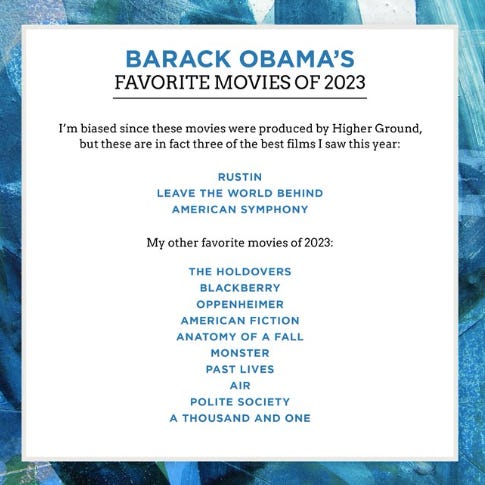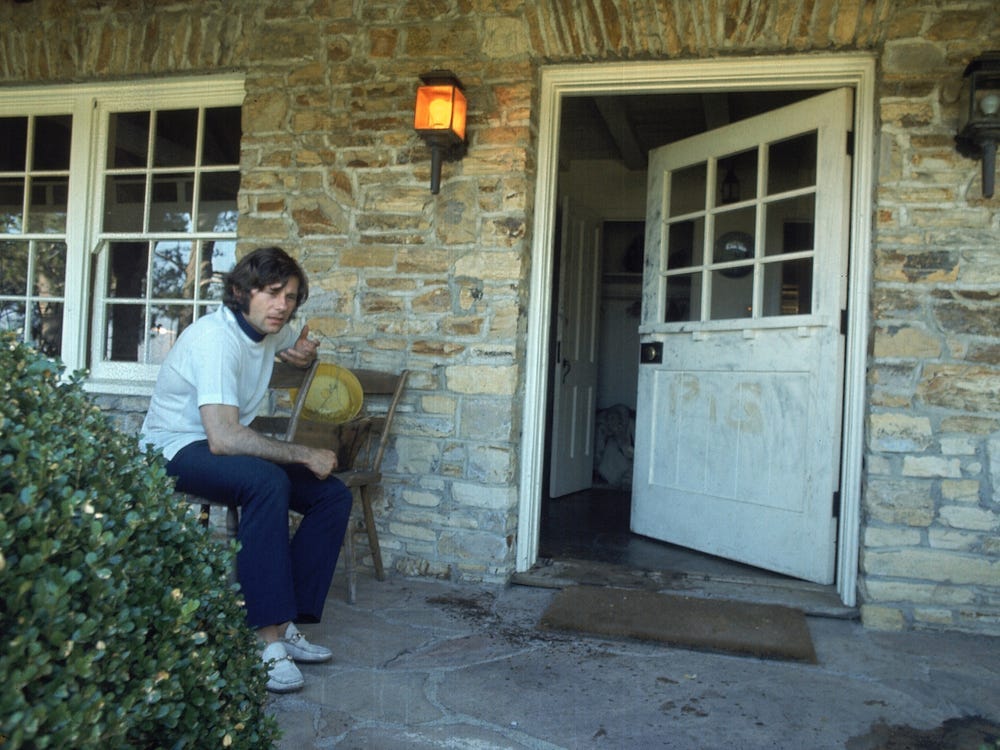You may have heard — Joan Didion claimed we “tell ourselves stories in order to live.” But — I wonder if we actually make lists in order to live.
Didion made this claim in the first line of “The White Album,” an essay that constellates Didion’s own mental health issues with the Manson Trial, a Doors recording session, and Black Panther Party meetings, among other cultural hallmarks of the decaying ‘60s. The organizing principle of the essay is Didion herself — she is the lens. I’ve asked my creative writing students many times to explain why this essay ends with the following line:
Quite often I reflect on this big house in Hollywood, on “Midnight Confessions” and on Ramon Navarro and on the fact that Roman Polanski and I are godparents to the same child, but writing has not yet helped me to see what it means.
I ask them to explain this because I really want to know. “It’s a real question,” I insist, unpersuasively. I show them the famous photo of Polanski outside the Cielo Drive bungalow and explain this was where his pregnant wife, an actress named Sharon Tate, was murdered. I suppose I do this because what I really want them to address is the Polanski of it all — why, in the end, does Didion point to her tether to the Polanski, to the rot and darkness and death of the decade as a conclusion? Is it a conclusion?
Over time, I’ve come to realize theme is anchor for Didion. A way to convince herself she was really there, was really part of this phantasmagoric moment. Didion creates meaning through a narrative organized out of incomprehensible events in which she herself is the only constant — although, as her last line, “writing has not yet helped me to see what it means,” conveys she herself does not yet know this.
Didion’s ‘60s were, of course, a more simplified time in the sense that there was not such an over abundance of information. Unlike us, Didion’s brain was not attempting to function like a router intaking more data than can ever actually be sorted, let alone understood. In “Between Memory and History: Les Lieux de Memoire,” French memory theorist Pierre Nora considers the hyper documentation made possible by cameras.
Imagine a society absorbed in its own historicity. It would be incapable of producing historians. Living entirely under the sign of the future, it would satisfy itself with automatic self-recording processes and auto-inventory machines, postponing indefinitely the task of understanding itself.
While Nora explains this in depth, I’ll TL;DR with: think about the camera (sc)roll on your iPhone. Most of us have an unsortable amount of photos, many taken out of an impulse to “not forget.” And yet — it is the very compulsion to document that removes one from the moment, that absents one from experience.
The List emerges as a way to sort, without any real “understanding of the self” the supersaturation of experience and information encountered every single day. In 1967, Susan Sontag reflected on her love of lists, writing:
I perceive value, I confer value, I create value, I even create — or guarantee — existence. Hence, my compulsion to make “lists.” The things (Beethoven’s music, movies, business firms) won’t exist unless I signify my interest in them by at least noting down their names.
Nothing exists unless I maintain it (by my interest, or my potential interest). This is an ultimate, mostly subliminal anxiety. Hence, I must remain always, both in principle + actively, interested in everything. Taking all of knowledge as my province.
Sontag explanation of The List feels, to me, like an answer to Nora’s anxiety about the indefinite postponement of “understanding the self.” Sontage’s lists take the enormity of “interest in everything” to “guarantee” the very existence of not just what she loves but who she is through the act of naming that which she wants to make realer, more inscribed in the overwritten world.
A decade after Sontag wrote the above journal entry, she records the following list of her likes and dislikes:
Things I like: fires, Venice, tequila, sunsets, babies, silent films, heights, coarse salt, top hats, large long-haired dogs, ship models, cinnamon, goose down quilts, pocket watches, the smell of newly mown grass, linen, Bach, Louis XIII furniture, sushi, microscopes, large rooms, ups, boots, drinking water, maple sugar candy.
Things I dislike: sleeping in an apartment alone, cold weather, couples, football games, swimming, anchovies, mustaches, cats, umbrellas, being photographed, the taste of licorice, washing my hair (or having it washed), wearing a wristwatch, giving a lecture, cigars, writing letters, taking showers, Robert Frost, German food.
Things I like: ivory, sweaters, architectural drawings, urinating, pizza (the Roman bread), staying in hotels, paper clips, the color blue, leather belts, making lists, Wagon-Lits, paying bills, caves, watching ice-skating, asking questions, taking taxis, Benin art, green apples, office furniture, Jews, eucalyptus trees, pen knives, aphorisms, hands.
Things I dislike: Television, baked beans, hirsute men, paperback books, standing, card games, dirty or disorderly apartments, flat pillows, being in the sun, Ezra Pound, freckles, violence in movies, having drops put in my eyes, meatloaf, painted nails, suicide, licking envelopes, ketchup, traversins [“bolsters”], nose drops, Coca-Cola, alcoholics, taking photographs.
Things I like: drums, carnations, socks, raw peas, chewing on sugar cane, bridges, Dürer, escalators, hot weather, sturgeon, tall people, deserts, white walls, horses, electric typewriters, cherries, wicker / rattan furniture, sitting cross-legged, stripes, large windows, fresh dill, reading aloud, going to bookstores, under-furnished rooms, dancing, Ariadne auf Naxos.
Yesterday, Obama released his yearly list of favorites. I’ll admit in the past, I’ve been skeptical about the former president’s lists — largely because it seems fairly obvious Obama does not actually read most of his recs. (Although I have often delighted in the idea of him reading Raven Leilani’s exquisitely rendered sex scenes in Luster.) But this year, in the context of Sontag’s defense of lists as not just as reifying of the self, but of the world in the otherwise disassociated riot of information, opinions, events, and experiences that seem to only occur more rapidly and less metabolizably — I appreciate the former President’s efforts to perceive, confer, and create value.


While I’ve never bothered to make my own lists (aside from a Twitter post about my five favorite novels of the year, a gesture which is now N/A because RIP Twitter), I’ve made my own curation of my favorite films, books, and music with a one sentence review as a way to, well, make myself lists in order to live.
Keep reading with a 7-day free trial
Subscribe to Bimbo Summit: A Pop Culture Study to keep reading this post and get 7 days of free access to the full post archives.



